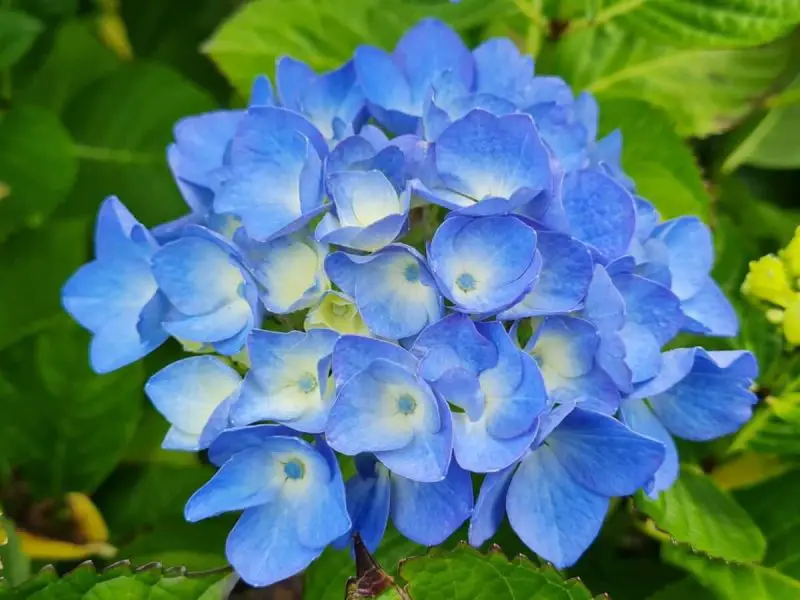Hydrangeas are among the most beloved flowering shrubs, known for their large, colorful blooms and elegant presence in gardens across the United States. Whether you’re a seasoned gardener or a beginner, knowing how to prune a hydrangea correctly can significantly affect how many flowers you’ll enjoy during blooming season. The process may seem intimidating at first, but with the right knowledge, pruning becomes a rewarding routine that ensures healthier, fuller, and more vibrant blooms year after year.
Understanding Hydrangea Types Before Pruning

Before you even pick up the pruning shears, it is crucial to understand what type of hydrangea you are dealing with. There are several common types of hydrangeas grown in American gardens, and each has different pruning requirements. The most commonly grown varieties include bigleaf hydrangea (Hydrangea macrophylla), panicle hydrangea (Hydrangea paniculata), smooth hydrangea (Hydrangea arborescens), oakleaf hydrangea (Hydrangea quercifolia), and climbing hydrangea (Hydrangea petiolaris).
The main reason why this distinction matters is that some hydrangeas bloom on old wood (growth from the previous year), while others bloom on new wood (growth from the current season). Pruning at the wrong time can remove the very stems that would produce flowers. Learning this fundamental classification is the first and most important step to mastering hydrangea care and ensuring consistent and lush blooming every year.
When Is the Best Time to Prune Hydrangeas?
Timing is everything when it comes to pruning hydrangeas. Prune at the wrong time, and you risk cutting off buds that would have turned into stunning blooms. The right time depends on the type of hydrangea in your garden. Getting familiar with the plant’s growth cycle will help you make informed decisions that lead to a healthier and more productive shrub.
Pruning Hydrangeas That Bloom on Old Wood
Bigleaf and oakleaf hydrangeas typically bloom on old wood. This means their flower buds are formed during the previous growing season. The best time to prune these types is immediately after they finish blooming, usually in late summer. Pruning them in fall or early spring can remove next year’s flower buds, resulting in fewer blooms.
Because the flower buds are already set in late summer or early autumn, any cuts made too late in the season are detrimental. Timing your pruning activities for these varieties is essential if you hope to enjoy a full display of flowers next season. Avoid rushing in with shears in early spring when other plants are being cleaned up; your hydrangea needs a different schedule.
Pruning Hydrangeas That Bloom on New Wood
Smooth and panicle hydrangeas bloom on new wood. For these varieties, pruning is best done in late winter or early spring, before new growth starts. This encourages the plant to produce strong new stems that will support larger and more numerous flower clusters.
Unlike old wood bloomers, these hydrangeas are forgiving and responsive to aggressive pruning. Even if you cut them back severely, they can still deliver a spectacular show. In fact, the energy redirected into fresh stems often results in larger flower heads, creating dramatic visual impact in your garden.
Tools and Preparation
Having the right tools is essential for effective and safe pruning. Sharp bypass pruners are ideal for clean cuts on thinner stems, while loppers may be needed for older, thicker branches. Always sanitize your tools with rubbing alcohol or a diluted bleach solution before and after pruning to prevent the spread of disease.
Also, take some time to examine your plant closely. Identify any dead, damaged, or diseased branches. These should be removed first, regardless of the type of hydrangea or the season. Doing so helps the plant redirect energy to healthy growth and flower production.
It’s also useful to wear gloves to protect your hands from potential splinters or cuts. For taller or older hydrangeas, consider using a small ladder or pole pruner to reach inner or upper branches safely. Don’t forget to dispose of clippings properly—dead plant material can harbor pests and fungi if left on the ground.
How to Prune Bigleaf Hydrangeas for More Blooms
Bigleaf hydrangeas, known for their stunning pink, blue, or purple flower heads, can be a bit tricky when it comes to pruning. Because they bloom on old wood, care must be taken not to remove the stems that contain next year’s flower buds.
The ideal time to prune is shortly after the blooms have faded in summer. Begin by cutting back flowering stems to a healthy pair of leaves or buds. If the shrub is overgrown, you can remove one-third of the oldest stems at the base to rejuvenate the plant without compromising bloom production. Avoid cutting back all the way unless the plant is severely damaged or diseased.
Removing some of the interior stems also helps improve air circulation and light penetration, which reduces the risk of powdery mildew and other fungal issues. With consistent annual maintenance, bigleaf hydrangeas can remain compact, lush, and floral for decades.
Pruning Panicle Hydrangeas for Bigger Blooms
Panicle hydrangeas are among the easiest types to prune. They produce conical flower clusters that range in color from white to pink to light green, and they bloom on new wood.
Late winter or early spring is the optimal time for pruning. Cut back last season’s growth to the first or second pair of healthy buds. This encourages the plant to channel energy into developing strong stems that can support heavy, showy blooms. For a more compact shape, you can cut further back without worrying about affecting flowering.
If your panicle hydrangea is young or newly planted, limit heavy pruning. Focus instead on shaping the plant and encouraging root development. Mature shrubs benefit from more aggressive cuts to stimulate abundant flowering.
Regular pruning of panicle hydrangeas not only improves flower production but also enhances the overall form and symmetry of the plant. Many gardeners shape these shrubs into tree-like forms, which look stunning in formal landscapes or as focal points in mixed borders.
Techniques for Pruning Smooth Hydrangeas
Smooth hydrangeas like ‘Annabelle’ are loved for their massive, globe-like flower heads and their ability to thrive in partial shade. Since they bloom on new wood, they respond well to a hard pruning routine.
In late winter or early spring, cut all stems down to about 12 to 18 inches above ground level. This encourages the growth of sturdy new stems that will produce large flower clusters. If you prefer a more natural shape, you can selectively prune one-third of the stems to the ground and trim others back more lightly.
Avoid pruning in the fall, as this can lead to weak growth that may not survive the winter. Also, resist the urge to cut too close to the ground, which can produce weak, floppy stems.
An annual renewal pruning is also helpful for older plants that have become leggy or congested. Smooth hydrangeas are vigorous growers, and periodic thinning can improve bloom quality and stem strength.
Trimming Oakleaf Hydrangeas for Shape and Health
Oakleaf hydrangeas have large, dramatic leaves and pyramid-shaped flower clusters. They bloom on old wood, so the best time to prune is just after flowering in summer.
Focus on removing spent flower heads and dead or damaged stems. To maintain shape and encourage airflow, cut back a few older stems to the base of the plant. Avoid heavy pruning, as this can lead to sparse blooms the following season.
These hydrangeas benefit from a light touch. Overpruning can diminish their natural, graceful shape and reduce their ability to produce flowers.
In colder climates, oakleaf hydrangeas may suffer from winter dieback, so it’s essential to avoid any pruning in fall that might encourage tender new growth. Leave some structure intact to protect the plant from temperature extremes.
Maintaining Climbing Hydrangeas
Climbing hydrangeas are slower-growing and require minimal pruning. They bloom on old wood, so any pruning should be done right after flowering.
Generally, prune only to remove dead wood or to control size and shape. Avoid cutting back aggressively, as it may take several seasons for blooms to return. If you’re training the plant along a trellis or wall, use pruning to direct growth rather than to reduce it.
Climbing hydrangeas, once established, can be quite vigorous and require occasional training to prevent them from becoming too unruly. Their woody stems cling well to stone and brick, making them ideal for shaded facades or garden walls.
Encouraging Reblooming with Deadheading
Deadheading, or the removal of spent flowers, is another essential technique for encouraging more blooms. While it doesn’t replace structural pruning, it can extend the blooming season, especially in varieties that are capable of reblooming.
To deadhead properly, snip off the faded flower just above the first set of healthy leaves. This prevents the plant from putting energy into seed production and instead directs it toward new flower buds.
Keep in mind that not all hydrangeas rebloom, and deadheading won’t always trigger more flowers. However, it does improve the appearance of the plant and can support a more robust bloom cycle in suitable varieties.
For reblooming types like ‘Endless Summer,’ regular deadheading can make a dramatic difference. It keeps the plant looking tidy and extends flowering well into late summer or early fall.
Common Mistakes to Avoid When Pruning Hydrangeas
One of the most common mistakes gardeners make is pruning at the wrong time, especially for hydrangeas that bloom on old wood. This can lead to a disappointing bloom season. Always identify your hydrangea type before you start.
Another frequent error is overpruning. While it’s tempting to shape the plant heavily, excessive cutting can stress the shrub and lead to weaker stems and fewer flowers.
Using dull or dirty tools is also a problem. Clean, sharp pruners make precise cuts that heal quickly, reducing the risk of infection and encouraging healthy regrowth.
Lastly, ignoring the overall structure of the plant can result in a misshapen appearance and poor airflow, which increases the risk of fungal diseases.
Long-Term Hydrangea Maintenance
Beyond pruning, keeping your hydrangea healthy involves proper watering, fertilizing, and site selection. Hydrangeas thrive in well-drained soil with consistent moisture. They appreciate morning sun and afternoon shade, especially in warmer regions.
Use a balanced fertilizer in spring to encourage growth. Avoid high-nitrogen products, which promote leaf growth at the expense of flowers. Mulching helps retain moisture and regulate soil temperature, while regular monitoring keeps pests and diseases in check.
Proper pruning enhances these efforts by ensuring the plant grows with strength and vitality year after year. With patience, care, and consistency, your hydrangeas will become a reliable showpiece in your landscape.
FAQs About Pruning Hydrangeas
What happens if I prune hydrangeas at the wrong time?
If you prune hydrangeas that bloom on old wood during fall or early spring, you’ll likely remove the buds that were set the previous season, resulting in few or no blooms.
Can I cut my hydrangea all the way to the ground?
Only certain types, such as smooth hydrangeas, tolerate hard pruning to near ground level. Others may suffer from excessive pruning and produce weak or no blooms.
How do I know if my hydrangea blooms on old or new wood?
Check your plant’s variety. If it’s a bigleaf or oakleaf hydrangea, it likely blooms on old wood. Panicle and smooth hydrangeas bloom on new wood. Observing when your plant sets buds and blooms can also offer clues.
Should I deadhead my hydrangeas?
Deadheading can encourage more blooms and improve plant appearance, especially in reblooming varieties. It’s not required for all types but is a helpful maintenance practice.
Why is my hydrangea not blooming even after pruning?
Possible reasons include pruning at the wrong time, insufficient sunlight, overly rich nitrogen soil, or winter damage. Ensure proper pruning technique, site conditions, and care.
Conclusion: Prune with Confidence for Flourishing Blooms
Pruning hydrangeas doesn’t have to be a mystery. By learning the specific needs of your plant and timing your pruning efforts correctly, you can significantly increase the number and quality of blooms. Whether you’re growing bigleaf hydrangeas for their classic charm or panicle types for their dramatic show, a thoughtful pruning strategy is key to garden success.
Give your hydrangeas the care and attention they deserve, and you’ll be rewarded with vibrant, full blooms that brighten your landscape season after season. Hydrangeas are forgiving plants, and even if you make a few mistakes along the way, they often bounce back with just a bit of extra care.






